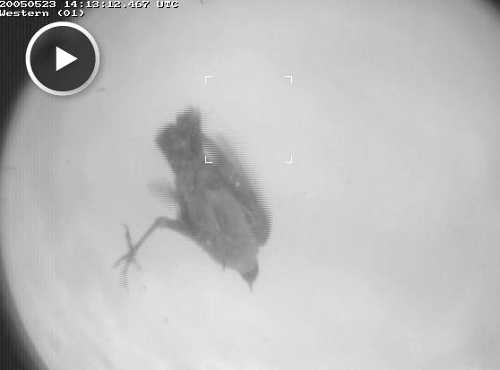- Dauna Coulter
- Posted On
Space News: What's hitting Earth?

Every day about 100 tons of meteoroids – fragments of dust and gravel and sometimes even big rocks – enter the Earth's atmosphere.
Stand out under the stars for more than half an hour on a clear night and you'll likely see a few of the meteors produced by the onslaught. But where does all this stuff come from? Surprisingly, the answer is not well known.
Now NASA is deploying a network of smart cameras across the United States to answer the question,
What's hitting Earth?
Did that meteor you saw blazing through the sky last night come from the asteroid belt? Was it created in a comet's death throes? Or was it a piece of space junk meeting a fiery demise?
“When I get to work each morning and power up my computer, there's an email waiting with answers,” said William Cooke, head of NASA's Meteoroid Environment Office. “And I don't have to lift a finger, except to click my mouse button."
Groups of smart cameras in the new meteor network triangulate the fireballs' paths, and special software uses the data to compute their orbits and email Cooke his morning message.
“If someone calls me and asks 'What was that?' I'll be able to tell them. We'll have a record of every big meteoroid that enters the atmosphere over the certain parts of the U.S. Nothing will burn up in those skies without me knowing about it!”
In other U.S. meteor networks, someone has to manually look at all the cameras' data and calculate the orbits – a painstaking process.
“With our network, our computers do it for us – and fast,” said Cooke.
The network's first three cameras, each about the size of a gumball machine, are already up and running. Cooke's team will soon have 15 cameras deployed east of the Mississippi River, with plans to expand nationwide. Cooke is actively seeking schools, science centers, and planetaria willing to host his cameras. Criteria are listed in the notes at the end of this story.
In addition to tracking fireballs and their orbits, Cooke's system gives him other valuable information.
“It provides data on meteor speed as a function of size – and this is critical to calibrating the models we use in designing spacecraft.”
Meteorite hunters will reap benefits too. By determining a bright fireball's trajectory through the atmosphere, the network's software can calculate whether it will plunge to Earth and pinpoint the impact location fairly precisely.
“And when we collect the meteorite chunks, we'll know their source. I could be holding a piece of Vesta in my hand. It would be like a free sample return mission!”
Opportunities like that, however, will be rare.

“Most meteorites fall in the ocean, lakes, forests, farmer's fields, or the Antarctic,” said Rhiannon Blaauw, who assists Cooke. “And the majority of those meteorites will never be found. But our system will help us track down more of them.”
All cameras in the network send their fireball information to Cooke and to a public Web site, http://fireballs.ndc.nasa.gov.
Teachers can contact Cooke at This email address is being protected from spambots. You need JavaScript enabled to view it. to request teacher workshop slides containing suggestions for classroom use of the data. Students can learn to plot fireball orbits and speeds, where the objects hit the ground, how high in the atmosphere the fireballs burn up, etc.
Cooke gives this advice to students and others who want to try meteor watching on their own:
“Go out on a clear night, lie flat on your back, and look straight up. It will take 30 to 40 minutes for your eyes to become light adapted, so be patient. By looking straight up, you may catch meteor streaks with your peripheral vision too. You don't need any special equipment – just your eyes.”
One more thing – don't forget to check the Web site to find out what you saw!
Dauna Coulter works for the National Aeronautics and Space Administration.
Follow Lake County News on Twitter at http://twitter.com/LakeCoNews , on Facebook at http://www.facebook.com/pages/Lake-County-News/143156775604?ref=mf and on YouTube at http://www.youtube.com/user/LakeCoNews .

 How to resolve AdBlock issue?
How to resolve AdBlock issue? 





